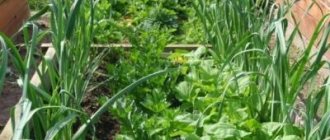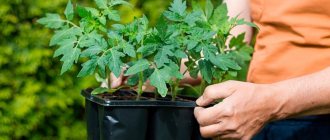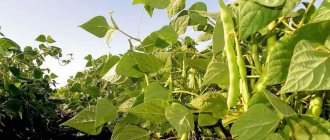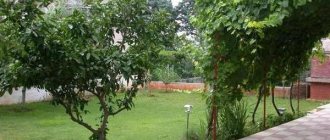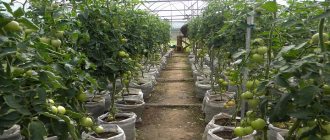Features of green beans
Although beans are heat-loving, the main problem when growing them is not the cold summer, but the long daylight hours. The homeland of legumes is Latin America, which is located near the equator. A day there lasts approximately 12 hours. Such conditions are optimal for the development of legumes. White nights, which are characteristic of northern regions, interfere with the normal development of plants.
The inflorescences of green beans are small, of different colors, but white or greenish are more common. The color, shape, length of grains and pods differ among different varieties. Fruits can be round or flat, smooth or curved, as can be seen in the photo. Common colors are green, purple and yellow. Less common are pink, variegated or white beans. According to the method of growth, legumes are divided into 2 types:
- Bush. A low, compact plant that is grown without support. Beans tolerate low temperatures well. The fruits ripen almost simultaneously.
- Curly. The length of the vine is 2.5-3 m. It grows upward, clinging to the support. The yield of climbing beans is high and the fruiting period is long.
You may be interested in:
Period and conditions for storing beans for the winter In order for beans to be stored for as long as possible, it is necessary to organize their proper storage. The product may...Read more...
On a note!
Green beans are pollinated only by their own flowers. This feature allows you to grow different varieties nearby. Since the plants do not cross-pollinate, their seeds can be planted the following year. All varietal qualities are preserved.
Green beans are rich in nutrients: proteins, vitamins, amino acids, flavonoids and minerals. Vegetarians value it for its large amount of protein and the ability to use the product as a complete replacement for meat. Grains are added to salads, preserves, first and second courses. Beans come in many varieties. The choice of variety depends on how the crop will be used: in the form of young fruits or ripened grains.
There are 3 botanical types of green beans:
- Asparagus culture is distinguished by tender pods, devoid of a parchment layer. Green beans are stored frozen.
- Hulling varieties are grown for their tasty grains. When dried, they can be stored for 5-6 years.
- Semi-sugar beans form pods that are edible at the stage of milky ripeness. Once they harden, only the grains are used for culinary purposes.
Bean sowing time
In the southern regions, beans are sown in late April. In areas with a temperate climate, beans are planted in open ground at the end of May, when frost is no longer expected. In the Urals and Siberia, the dates are shifted to the beginning of June. The sprouts can withstand temperatures not lower than 0°C, but at -1°C they will die. After a short frost, the seedlings will survive, but will develop slowly and produce a poor harvest. The optimal daytime temperature for legumes is +20...+25°C.
Beans are planted when the soil warms up to +12...+15°C to a depth of 10-12 cm. According to popular observations, the beginning of chestnut flowering indicates that the earth is warm enough. To start planting earlier, cover the ground with plastic film to warm it up. After sowing the beans, the beds need to be covered again. The film is removed when the night temperature rises to +12°C.
On a note!
White agrofabric, lutrasil or spunbond can be used as a covering material.
The best varieties of green beans
There are about 50 varieties of beans. Most of them were created by breeders. When choosing a variety, in addition to yield, you need to take into account the possibility of its cultivation in a particular region. To avoid difficulties when growing beans in open ground, you should plant varieties adapted to the climatic conditions of the area.
Varieties for the Moscow region, Ukraine and Belarus
In the Moscow region, Ukraine and Belarus, the climate is mild and warm. Almost any variety of beans can be grown here. Gardeners prefer to plant the following varieties:
- Moscow white green-pod 556 is a medium-ripening crop. The fruits are harvested 100 days after sowing. The bushes are low - only 25 cm. The leaves of the pods are covered with a thin parchment film. Plants tolerate short-term drought well.
- Nomad is a mid-early variety. The plant is climbing. The beans are oval-shaped, dark yellow with a subtle purple pattern. The pods do not contain coarse fibers. The variety is not affected by the fungus.
- Bergold is a variety of green beans, characterized by high yields. The fruits ripen early. Milk ripeness occurs 55-60 days after planting. The pods are soft and juicy. The bushes are compact, 40 cm high. The pods are yellow, slightly curved, 15 cm long. The grains are oval, white. The plants bear fruit abundantly, yielding more than 2.5 kg per 1 m2.
Varieties for the middle zone and the Urals
In the middle zone and the Urals, the soil warms up late. Early varieties are suitable for such areas:
- Oran is an early-ripening grain crop. The harvest is harvested 80 days after the sprouts appear. The bushes reach a height of 40-55 cm. The pods are slightly curved, 9-12 cm long. The seeds are white and small. The yield is 1.5-2 kg per 1 m2. The variety is valued for its excellent taste.
- Pink is an early ripening variety. From the moment of seed germination and harvest ripening, 65-85 days pass. The bushes grow up to 3 m in height, so they require supports. The pods are green with purple streaks. They are juicy and tender, without parchment fibers. The grains are marbled pink.
- Fatima is a high-yielding variety. The shoots reach a length of about 3 meters. Technical ripeness occurs 55 days after the sprouts appear. Fruiting is long lasting. The pods are light green, without bending, up to 23 cm in length. The seeds are white with veins. The taste of green beans is delicate and sugary. 3.2-3.5 kg of fruits are collected from 1 m2.
On a note!
Bush beans are sown first, and climbing beans are sown 7 days later.
By the way, Bilayt will help you lose weight perfectly for those who need it. It worked for many of our readers.
Varieties for Siberia
The Siberian climate is harsher in comparison with the European part of Russia. Spring here is cold, constant warmth sets in late. Gardeners most often grow the following varieties of beans in Siberia:
- The winner is the climbing bean, characterized by its large pods. They are removed 85-90 days after emergence. The fruits reach a length of 28-30 cm. The beans are purple with black specks. From 1 m2 you can get 1.5 kg of fruit. Plants have strong immunity and cold resistance. Because of their dark red inflorescences, beans are often planted for decorative purposes.
- The butter king is an early ripening green bean. The fruit ripening period lasts 45 days. The tubular pods are tender and pleasant to the taste. The bushes are compact and grow up to 40 cm in height. The fruits are round, bright yellow, 25 cm long. They are tender, slightly oily in taste. The variety has a high yield - 2-2.3 kg/m2. Beans are resistant to fungal and viral diseases and tolerate drought well.
Growing green beans indoors
The technology for cultivating green beans indoors requires suitable conditions. It can be grown on a loggia or balcony. It is better to plant bush varieties, because... they do not require much space, and the harvest ripens en masse and early. However, if you have tall windows, even climbing beans will grow well. The following varieties are suitable for growing indoors: Bona, Sweet Courage, Neringa, Blue Lake. Violetta, Golden Neck, and Raspberry Ring are suitable as interior decorations.
Beans have shallow roots, so large containers are not needed. A flower pot with a volume of 3 liters is enough for a bush plant, and a box of 30-35 liters is enough for a vine. The containers are filled with garden soil and rotted manure in a 2:1 ratio. You can prepare a mixture of compost, sand and peat. To prevent diseases, add crushed chalk or activated carbon. The soil must be nutritious with a neutral pH. For climbing varieties, supports 1.5 m high are installed.
Sprouted bean seeds are planted in pots in early May. The soil is moistened as it dries. The procedure is carried out in the morning, trying to avoid water getting on the stems. After the formation of the second pair of leaves, watering is stopped. It is resumed when buds appear. The bushes bloom 1.5 months after planting. Fertilizers are applied once every 2 weeks. Plants are fed with phosphorus-potassium fertilizers or ash infusion.
Important!
Beans planted in an open loggia should be protected from rain to prevent stagnation of water. Containers need to be moved under the roof.
The lack of light is compensated by supplementary illumination with fluorescent lamps. Lighting is organized so that daylight hours last no more than 12 hours. In summer, plants feel great on western or eastern windows. At home, the grain yield will be low. Therefore, beans are mainly planted to obtain milk pods, although there will not be as many of them as in the garden.
Common Questions
Question to the expert How to secure the stems to a support? Since beans do not have runners, rough stems are used to secure them to a support. They are wrapped around a wire stretched between pegs, moving counterclockwise. If you follow the reverse order, the thin and tall stems of the plant will collapse. How to preserve the crop longer? After harvest, bean pods begin to deteriorate quite quickly, so people who want to preserve the crop for a long time freeze it. It is enough to wash the pods, cut them for easy storage and place them in the freezer. The grains are simply dried and stored in a dry place. Is manure suitable for fertilizing? Manure, like other organic fertilizers, is not suitable for beans, since they produce nitrogen on their own. An excess of the element will lead to rapid withering of the pods and overall poor development of the plant. Moreover, with an excess of nitrogen, the roots stop growing, which means the above-ground part of the plant begins to lack nutrients and moisture. Do crops need to be covered with film? Bean crops are covered until the middle, and sometimes the end of June, depending on the climate of the region. Many gardeners use lutrasil as a film; it not only protects plants from the cold, but also helps regulate the length of daylight hours.
Beans are a healthy and tasty crop, actively grown in Russia. It is enough to follow the minimum rules when growing a plant so that it rewards you with a rich harvest.
Sources
- https://udobrenok.ru/posadka-sparzhevoj-fasoli
- https://ogorod365.com/posadka-sparzhevoj-fasoli-v-2021-godu-po-lunnomu-kalendaryu-sroki-blagopriyatnye-dni/
- https://gribydacha.info/posadka-sparzhevoj-fasoli-v-2021-godu/
- https://niva-s.ru/sad-i-vinogradnik/sparzhevaya-fasol-vyrashchivanie-i-uhod.html
- https://ogorod365.com/posadka-fasoli-v-2021-godu-kogda-sazhat-blagopriyatnye-dni/
- https://sup-kartoshka.ru/ogorodnik/vyrashchivanie-fasoli.html
Rules for sowing beans
In order for seedlings to appear faster, bean seeds must be properly prepared for planting. The activity includes calibration, disinfection and soaking. Before you start preparing the seeds, they need to be warmed up in the sun. The grains must be laid out on a southern windowsill and kept there for at least 7 days. Planting material cannot be placed on the battery.
Pre-planting seed preparation
Pre-sowing preparation will increase the germination of beans and prevent the development of diseases. The process consists of the following steps:
- Calibration Discard damaged and discolored seeds. Selected grains are immersed in a 3-5% solution of table salt. Specimens that float to the surface are unsuitable for landing. The seeds remaining at the bottom are thoroughly washed with water.
- Disinfection. The grains are kept for 20 minutes in a 2% solution of potassium permanganate (2 g per 100 ml of water). Then they are washed and dried. Instead of potassium permanganate, you can use a biological fungicide: Maxim, Baikal-EM, Alirin-B or Bayleton.
- Soak. Place a damp cloth at the bottom of a wide container, then place the beans on it. They are covered with wet gauze folded in several layers. The planting material is kept for 12-15 hours, ensuring that it always remains moist. It is useful to add a couple of drops of a growth stimulator to the water: Epin, Kornevin or Zircon.
- Hardening. Used in regions with late return frosts. The soaked bean grains are kept in the refrigerator at a temperature of +4°C for 5-6 hours.
Advice!
To protect the beans from pests and fungus, immediately before planting, the sprouted grains should be placed in a boric acid solution for 5 minutes. To prepare it you will need 1 liter of warm water and 0.2 g of crystalline substance.
Site selection and soil preparation
A good harvest of green beans can be grown in a bright area protected from the wind. It is recommended to plant legumes in fertile soil with a light structure. On sandy or clayey soils, especially with high groundwater levels, the bushes grow poorly. In wetlands, the roots will simply rot. In the garden, beans should be planted after nightshades, cucumbers, cabbage, carrots, beets, and corn. Bad predecessors would be beans, peas, soybeans, peanuts and lentils. Beans cannot be returned to their original place for 3-4 years.
If the soil was well filled with organic matter, it is enough to add phosphorus-potassium mixtures. Beans independently enrich the soil with nitrogen, so there is no need to add the nutrient. Its excess causes intensive growth of green mass to the detriment of the harvest. If the soil is poor, during autumn digging the following components are added per 1 m2:
- compost or rotted manure – 4 kg;
- potash fertilizers – 20-25 g;
- superphosphate – 30 g.
2 weeks before planting bean seeds, the soil is loosened and potassium fertilizer is re-applied. Wood ash is also suitable, which needs to be added at the rate of 0.5-0.7 liters per 1 m2. Beans cannot tolerate increased soil acidity. Optimal pH values are 6-7. If they are higher than normal, the soil is limed with dolomite flour or fluff. The substances are embedded to a depth of 20 cm. Before sowing the seeds, weeds are removed from the beds.
Choosing a landing site
Almost all cowpea varieties are very picky about the germination area. The amount of harvest that the plant can produce depends on the right choice.
Lighting
This legume grows in sunny areas; areas with a lot of shade should not be chosen. It is also necessary to pay attention to the wind, or rather the lack thereof. The crop will not burn in the open sun - the bean leaves themselves will create the shade they need.
The soil
The bush grows well on fertile, breathable soil. The soil water should not lie too deep, but the area cannot be swampy either. Acidic and clayey soil is considered a poor choice for planting.
You should not choose soil rich in nitrogen; the bush produces it itself. Oversaturation with this chemical element will negatively affect the development of cowpea. If the location is in the northern region, then it is better to plant the plant on sandy soil. This soil warms up faster and this property will benefit the beans.
Predecessors
Green beans survive well after many crops. But the best results can be achieved after nightshade and cruciferous vegetables (cabbage, eggplant, tomato, etc.).
Scheme and depth of planting beans
Bush varieties of the crop are sown in rows or in a checkerboard pattern, making holes at a distance of 20-25 cm. Gaps of 40-45 cm are left between the rows. 2 beans are placed in each hole. It is not advisable to make more than 4 rows in one bed. Climbing varieties are planted according to a 30x50 cm pattern. 5 seeds are placed in each hole. If the ground is not wet enough, add a little water. When one leaf is formed on the sprouts, 3 strong seedlings are left and the rest are removed.
Important!
The optimal depth for planting beans is 5-6 cm. If the top layer of soil is thin, the sprouts will die, and if the seeds are planted deeply, the shoots will appear later.
Climbing beans are properly grown on a support. The columns must be strong, since adult plants with fruits are very heavy. Legumes can be planted together with corn, sunflowers, near a fence or gazebo. A trellis 1.5-2 m high is installed on the bed. It is constructed using stakes, between which twine or wire is pulled.
When grown using the nesting method, the legume crop is planted around a wooden stake, to the top of which ropes or twigs are attached. They can be fixed with wire. The rope is placed around the perimeter of the circle to create a pyramid-shaped structure. Metal or plastic pipe scraps are not suitable for support. The shoots will not stay on a slippery surface.
How to plant green beans correctly
Planting bean seeds in open ground can be done in two ways: row or strip. In the first case, the plants are placed in one line at a distance of 25 cm from each other. The average row spacing is 45 cm. This method requires a large area as the planting density decreases. Row sowing provides more convenient harvesting, and during heavy rains the bushes dry out quickly and the fungus does not develop.
You may be interested in:
Lecho with green beans Vegetable lecho is a delicious dinner hidden in a jar. Fragrant vegetables can be served cold, topped with a buttery sauce...Read more...
With belt sowing, 2 or 3 rows are brought closer together to form a belt. Two- or three-line landings are obtained. The distance between the holes is left the same as with the row method, and the row spacing is made wider - 60-70 cm. Belt sowing allows you to save space on the site and water when watering. Thanks to the small planting area, it is easier to control weeds.
How to plant seeds in open ground
The process of sowing bean seeds is simple. Several bean plantings can be carried out per season. If the bed has been prepared in the fall and fertilizers have been added to the soil, then you can simply loosen the soil and start planting the seeds.
Sowing seeds, instructions:
- Make grooves in the garden bed;
- Water the rows with cool water;
- In light soils, the seeds are deepened 5 cm. If the bed has loamy soil, then sow 3-4 cm deep;
- You can place 1-2 beans in one cell;
- Leave the distance between cells approximately 20 cm;
- Leave 40-50 cm between grooves;
- Sprinkle the grooves with earth and compact them with your hands;
- Water the seed bed;
- At first, it is recommended to cover the bed with film.
When the seedlings become stronger, the shelter is removed.
You can plant beans next to other garden crops. This way you can save a lot of space. You can plant pumpkin, eggplant, peppers, and cabbage with beans. Green beans are an excellent green manure. It nourishes the soil with nitrogen, which is necessary for the active growth of other plants.
Green beans: growing and care
Shoots from planted seeds appear after 15-25 days. When the sprouts reach a height of 10 cm, they are earthed up. This measure will help the plants gain a foothold in the ground. The procedure is repeated several times per season. Excess sprouts are not pulled out, but pinched off so as not to damage the roots. To retain moisture, the soil between the rows can be sprinkled with dry grass or humus. A layer of mulch prevents weed growth. To redirect nutrition to the fruits, the tops of climbing varieties are removed when the stems grow to 2 m in length.
Watering and fertilizing
The technology for growing bush beans includes watering, weeding and fertilizing. The soil should not be allowed to dry out. With a lack of moisture, the ovaries of green beans begin to crumble en masse. During flowering, plants are watered every other day so that the top layer does not dry out. When the fruits set, the soil is moistened rarely, but abundantly. One plant consumes 1.5-2 liters of settled water. Its temperature should not be lower than +18°C. The interval between waterings is increased to 6-7 days. When the soil dries slightly, it needs to be carefully loosened.
When caring for beans, complex fertilizers are applied. Plants are responsive to fertilizing: the pods become fleshy and the stems become powerful. During the season, fertilizers are applied 3 times:
- The first fertilizing is carried out 1 month after emergence. Superphosphate is added to the soil at the rate of 30-40 g/m2.
- The plants are fed the second time 21 days after the first. Add 10-15 g of potassium salt per 1 m2.
- The third time the legumes are fed after 3 weeks. They can be watered with an infusion of herbs diluted with water in a ratio of 1:10.
On a note!
Green beans are sensitive to deficiencies of boron, molybdenum and manganese. Therefore, it is useful to water the plants twice with a mixture of boric acid, potassium permanganate and ammonium sulfate in a proportion of 2 g per 10 liters of water.
Pest protection
With proper seed preparation, diseases rarely occur. Crop rotation must be observed. It is recommended to treat the soil with Fitosporin. Among the insect pests, it is worth noting aphids, whiteflies, bean weevils and sprout flies. They multiply quickly and are capable of destroying an entire crop. Before planting, the grains should be kept in the freezer for 3-4 days so that the bugs and their larvae die.
For preventive purposes, plantings can be treated with a biological product: Akarin, Bitoxibacillin, Boverin or Fitoverm. Plants are sprayed at least three times. The product can be used during any growing season as it is non-toxic. Biological products do not harm pollinating insects or the environment. You can get rid of aphids by spraying the plants with a soap solution or onion infusion.
Diseases and pests
Among the pests that attack bean bushes, the most dangerous are:
- Bean borer (a small bug that eats beans from the inside). It can ruin the entire crop of harvested beans during storage. As a preventative measure after harvesting, beans must first be kept in the freezer for 1 day, then heated in the oven at a temperature of 60-70°C for 15-17 hours. You also need to remember that it is better to collect beans for storage before cracking begins. In the spring, before planting bean seeds, they are treated with a solution of boric acid or bacterial preparations “Gomelin”, “Bitoxibacillin”, which also helps get rid of this pest.
- Garden and cabbage cutworm (its larvae eat greens and beans). The fight against it begins in the fall, you need to dig the ground deeply, spray it with wormwood infusion in the summer (300g per bucket of water, add 1 glass of wood ash and 1 tablespoon of green soap). Of the chemical preparations, “Sherpa” and “Decis” are effective.
- Whitefly (small flying insect -1.5 mm in length) It is difficult to fight. Folk control measures include frequent spraying, for example, with tansy infusion. If folk remedies do not help, then you will have to use the drugs “Fitoverm” and “Aktellik”, “Gaupsin”.
If you do not follow the rules for growing beans (correct planting scheme, timely weeding, planting in sunny places, proper watering), then they can be affected by diseases such as:
- Powdery mildew (gray spots on the leaves that look like flour) The infected plant is sprayed with a suspension of colloidal sulfur (1%).
- Viral mosaic (plants become covered with yellow spots, then become colorless). It is better to remove infected plants; the remaining ones are treated with Bordeaux mixture.
- Anthracnose (brown spots on seedlings, red spots on fruits, brown spots, ulcers). This disease appears from sudden changes in weather and densely planted bushes. To prevent this disease, it is necessary to spray with the preparations “Energen” and “Bud”.
- White and gray rot (white and gray plaque appears).
- Root rot (plants stop receiving nutrition from the soil), from which spraying with Bordeaux mixture (1%) helps well.
Harvesting beans
Bush beans bear fruit in a friendly manner. The harvest can be harvested in 2-3 steps. Climbing varieties bear fruit for 6-8 weeks, until a strong cold snap. The pods must be collected once every 5-6 days. Timely removal of fruits stimulates the formation of new ovaries. The timing of the bean harvest depends on the type of crop:
- in early varieties, the pods begin to be removed approximately 50 days after the sprouts appear;
- for mid-season - after 70 days;
- for later ones - after 90-100 days.
Green pods or ripened beans are suitable for food. Young fruits of asparagus beans are harvested 10-12 days after flowering. The pods should not be overripe. Otherwise they will become tough and tasteless. Fruits in a state of milk ripeness bend well and do not break. The beans contained inside reach the size of a wheat grain. The pods are cut with scissors in the morning, when they are at their juiciest. They are used to prepare a variety of dishes and stored frozen or canned.
You may be interested in:
How to quickly germinate beans at home Beans are a crop that has a large amount of nutrients, often grown in home gardens...Read more...
The grains are collected from ripened pods. They are picked and dried in the sun, placed under cloth or paper. The beans are shaken out when the fruit flaps open. Damaged grains are thrown away, and the rest are stored in jars with tight lids. Supplies are placed in a dark, cool place. Planting material is collected from the bottom of productive and healthy bushes. The grains are stored on the bottom shelf of the refrigerator.
Advice!
It is not necessary to remove the beans from the pods by hand. They can be knocked out with a stick by wrapping the dry fruits in a blanket.
Harvest and storage
These beans can be harvested at intervals of approximately 1-2 times a week. During this time, quite a lot of young green pods grow, not yet coarse and not overgrown. They are stored in plastic bags in the refrigerator at 90% humidity. But even in such conditions they quickly lose moisture, appearance and taste. You can extend the shelf life of the product if you freeze the pods in small portions and put them in the freezer. You can also make pickled beans, which have a shelf life of 1-2 years.
Date: Thursday, December 03, 2020


